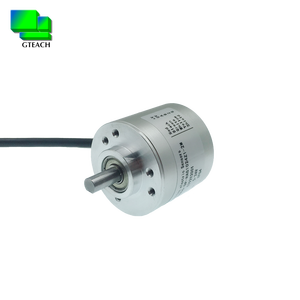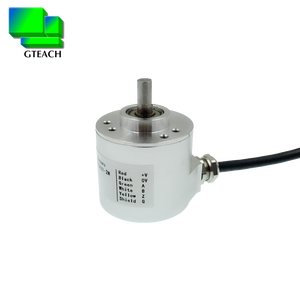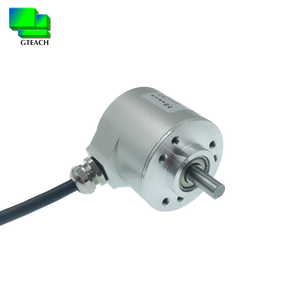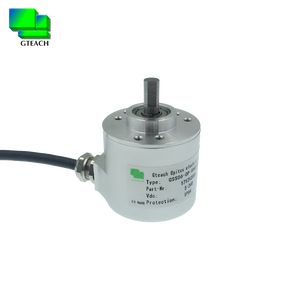(42 products available)






































































































































































A digtal optical tachometer is a device used to measure the rotational speed of an object. It has a sensor and a light source that detects the object’s surface markings. The digital optical tachometer calculates the speed based on the number of times the markings pass the sensor and displays the result on a digital screen. There are various types of digital optical tachometers, which include:
Handheld Digital Optical Tachometer
This type of digital optical tachometer is designed to be held in hand. It is portable, and its main function is to measure the speed of rotating parts or objects. Since they are handheld, the batteries have to be regularly charged or replaced. They also have LCD screens that allow for easy viewing of data.
Laser Digital Optical Tachometer
These digital optical tachometers use lasers to measure the speed of rotating objects or surfaces accurately. They are particularly useful for measuring the speed of distant or small objects that are hard to reach or see. Because of the advanced technology used in these tachometers, they are more expensive than the others.
Contact Digital Optical Tachometer
These types of digital optical tachometers require physical contact with the object or surface being measured. They have a small probe or wheel that has to touch the surface to get accurate measurements. This type of digital optical tachometer is suitable for applications that require high precision and accuracy.
Non-Contact Digital Optical Tachometer
This type of digital optical tachometer does not require physical contact with the object or surface being measured. They use technologies like lasers or infrared to measure the speed. This type of digital optical tachometer is suitable for applications where contact could interfere with the measurement or where the object is fragile.
Miniature Digital Optical Tachometer
This type of digital optical tachometer is compact and small-sized. They are designed for applications where space is limited or for tasks that require measuring the speed of small or miniature rotating parts. Despite their small size, they are designed to be highly efficient and accurate.
Specifications of digital optical tachometers vary depending on the type and model. Here are some common ones:
Here are some general maintenance practices for digital optical tachometers:
Choosing the right digital optical tachometer is crucial for ensuring accurate and reliable RPM measurements. Here's a comprehensive guide to help select the right digital optical tachometer:
By considering these factors, selecting the right digital optical tachometer tailored to specific needs and applications becomes easier. Whether it's for automotive diagnostics, industrial machinery monitoring, or any other RPM measurement requirement, the right optical tachometer will ensure precision and reliability.
Here's a step-by-step guide for replacing a digital optical tachometer:
Turn off the power
To begin, turn off the power to the device or machinery where the tachometer is being replaced. This is important to avoid accidents and ensure the safety of the personnel involved in the operation.
Disconnect the old tachometer
After that, the connections of the old tachometer must be disconnected. These connections may include power supply wires and signal output wires connected to the device being measured.
Remove the mounting hardware
Subsequently, the mounting hardware, such as screws or brackets, must be removed to release the old tachometer from its mounting location. This may require the use of appropriate tools, such as screwdrivers or wrenches.
Install the new tachometer
At this point, the new tachometer must be positioned in its mounting location. Subsequently, the mounting hardware must be installed and tightened to ensure that the tachometer is securely held in place.
Connect the new tachometer
Now, the power supply and signal output wires must be connected to the new tachometer, following the manufacturer's instructions. It is important to ensure that the connections are performed with the correct polarity and in accordance with the specified electrical parameters.
Check the alignment
The alignment of the optical sensor with the reference mark must be verified to ensure accurate speed measurement. If necessary, adjustments must be made to obtain the correct alignment.
Turn on the power
Once all connections and alignments have been verified, the power supply to the device or machinery where the tachometer has been replaced must be turned on. This will allow the new tachometer to start operating.
Perform a functional test
A functional test must be performed to ensure that the new tachometer is operating correctly and displaying accurate speed measurements. It is recommended to check the readings at different speeds to verify the proper operation of the instrument.
Q1: How do you use a digital optical tachometer?
A1: To use a digital optical tachometer, first, turn it on and follow any initial setup instructions provided in the manual. Then, point the device's beam at the rotating object, such as a motor shaft, and apply the reflective tape if necessary. Finally, observe the digital display to read the measured RPM (revolutions per minute).
Q2: How accurate is the digital optical tachometer?
A2: The digital optical tachometer is highly precise. Its accuracy level can be affected by factors such as the distance from the rotating object, the quality of the reflective surface, and environmental conditions.
Q3: What are the advantages of a digital optical tachometer?
A3: Digital optical tachometers have several advantages. For instance, they are non-contact, which means they do not touch the rotating object while measuring. This feature reduces the risk of damage to the measured object and ensures the operator's safety. Additionally, they are compact and portable, making them easy to carry and use in various situations. Finally, digital optical tachometers provide precise and stable measurements.
Q4: Can a digital optical tachometer measure slow speeds?
A4: Yes, digital optical tachometers can measure low speeds. However, measurements at low speeds might be less accurate and require a longer measurement time.
Q5: Why does the digital optical tachometer give an error message?
A5: Digital optical tachometers can generate error messages due to various reasons, such as insufficient battery power, a dirty lens, or an error in the setup process. In this case, users need to check the device according to the instructions in the manual.